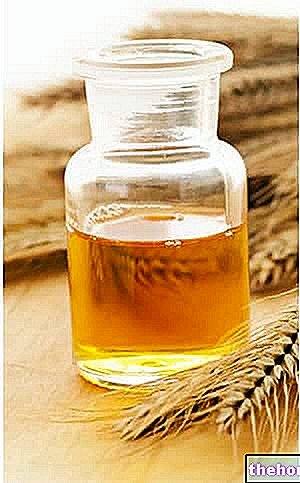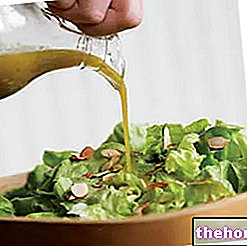Introduction: the olive oil
Olive: botanical aspects and cultivation
Composition of the ripe olive, nutritional properties
Olive harvest
Olive oil: chemical composition
Olive oil: properties and nutritional characteristics
Preparation of the olive oil
Conservation of olive oil
Pomace oil
Classification of olive oils, analysis and fraud
Olive oil as a laxative
Olive tree in herbal medicine - sea buckthorn
Cosmetic use: olive oil - Olive oil unsaponifiables - Olive leaf extract
The extraction of oil from olives is mainly carried out with three systems:
- by pressure (classic method, discontinuous)
- by centrifugation (modern, continuous method)
- percolation by selective filtration (modern, continuous method)
METHOD BY MEANS OF PRESSURE: classic and ancient, it has the disadvantage of being discontinuous.

The olives that arrive at the mill must first of all be cleaned of leaves, earth and anything else that could damage the organoleptic characteristics of the oil and the plant itself. The drupes will then undergo one or more passages in suction machines and washing tanks. Always at this level, for the production of particularly fine oils, a selection can be carried out by hand, removing the olives that do not meet the quality standards.
Immediately after the cleaning of the olives, the milling or pressing is carried out, that is, their crushing by mechanical means. The drupes are placed inside the mullers (special metal tanks equipped with 2, 3 or 4 very heavy granite wheels, which rotate on themselves and around a central shaft, from which they distance to different degrees, thus determining the crushing of the olive).
The pressing has the purpose of damaging the pulp cells, favoring the escape of oil from the vacuoles and the crushing of the stone. This last aspect is very important because, since the core has a woody shell, when it undergoes breakage it produces splinters which in turn favor the lesion of the cellular structures of the pulp and a greater extraction of oil.
In the most modern mills, the millstones or mullers are replaced by metal hammers, cylinders or discs, which allow to reduce production times.
NOTE
An oil with a very high acidity is defined as clear, is not suitable for human consumption (it has an unpleasant taste), and is subjected to a series of processes to make it so.
The vegetation water is used for fertigation, that is, it is scattered in the fields and, being rich in minerals and nitrogenous substances, increases the fertility of the soil.
Other Foods - Oils and Fats Peanut Butter Cocoa Butter Butter Greaves Wheat Germ Animal Fats Margarine Vegetable Cream Tropical Oils and Fats Frying Oils Vegetable Oils Peanut Oil Borage Oil Rapeseed Oil Krill Oil Poppy Seed Oil Seed Oil Pumpkin Avocado oil Hemp oil Safflower oil Coconut oil Cod liver oil Wheat germ oil Linseed oil Macadamia oil Corn oil Almond oil Hazelnut oil Walnut oil Olive oil Palm oil fish Rapeseed oil Rice oil Pomace oil Seed oil Soybean oil Grapeseed oil Extra virgin olive oil Sesame seeds and sesame oil Lard OTHER ARTICLES OILS AND FATS Categories Food Alcoholics Meat Cereals and derivatives Sweeteners Sweets Offal Fruit Dried fruit Milk and Derivatives Legumes Oils and Fats Fish and fishery products Salami Spices Vegetables Health recipes Appetizers Bread, Pizza and Brioche First courses Seconds pi acts Vegetables and Salads Sweets and Desserts Ice creams and sorbets Syrups, liqueurs and grappa Basic Preparations ---- In the Kitchen with leftovers Carnival recipes Christmas recipes Light diet recipes for Celiacs Recipes for Diabetics Recipes for Holidays Recipes for Valentine's Day Recipes for Vegetarians Protein Recipes Regional Recipes Vegan Recipes




























